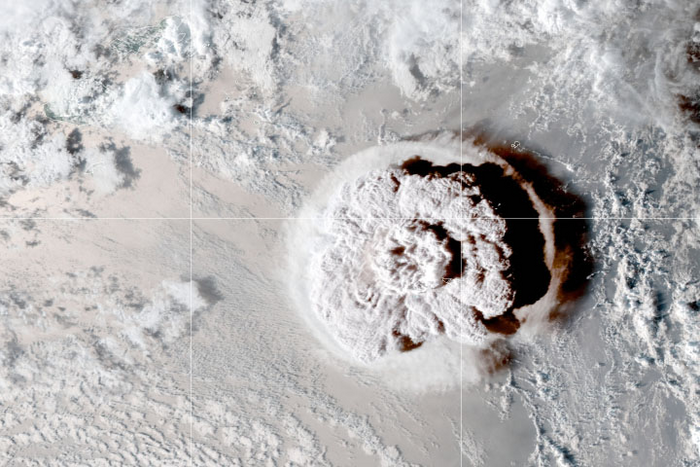The eruption of the submarine volcano Tonga in the Pacific Ocean, which took place on January 15, 2022, is confirmed as one of the most violent ever observed in the modern era: it produced gravitational and atmospheric waves that reverberated around the Earth, almost reaching the maximum limit for their speed of propagation, and the effects of the eruption may not be fully exhausted yet.
Confirmation of the event's uniqueness comes from a study led by the British University of Bath and published in the journal Nature, and the results may also help improve weather and climate models of the atmosphere.
The last eruption of Tonga produced a vertical plume, formed of water and ash, more than 50 kilometers high and the heat released remained the largest source of gravitational waves on Earth for the next 12 hours.
The event also produced ripple-like gravitational waves that extended into the Pacific, as shown by satellite observations.
Finally, atmospheric waves were also generated that reverberated around the planet at least six times and reached speeds close to their theoretical limit: 320 meters per second.
“This was a truly huge and unique explosion, in terms of what has been observed by science to date,” comments Corwin Wright, head of the study.
"We have never before seen atmospheric waves revolve around the entire planet - he adds - or at this speed".
But the study authors also expect further impacts: "My feeling is that there is more to come from this eruption," says Scott Osprey of the University of Oxford, who participated in the research.
"While the exceptional amount of water vapor spreads throughout the stratosphere - continues Osprey - everyone's eyes will turn to the ozone hole and its extension when spring arrives in the southern hemisphere".




